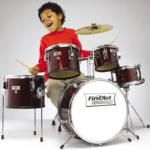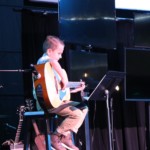Have you ever wondered what the piano family tree would look like? The piano is a relatively new instrument to the classical music world! The piano’s sound is created from hammers striking steel strings. Because of extreme tension the piano strings need to be under in order to vibrate and create tones, a large steel brace is needed in the body of the piano to support the stress. Therefore, the concert grand pianos of today were only made possible with the industrialization of the steel production, in the middle of the 19th century.
When following the piano family tree, things get pretty interesting. While the piano’s technical action is a hammer striking a taut steel string, there are many keyboard instruments utilizing different methods to create the needed vibrations for tone (vibrating strings, using air to vibrate reeds or to cause whistling over a hole).
The most ancient predecessors belong to two piano family trees: the hammered dulcimer in the string family, and the organ in the keyboards. The hammered dulcimer has tuned strings across a soundboard, and makes sound by striking the strings with felted hammers held in the hands. The organ uses (historically man-powered) bellows to force air either through reeds or across pipes. While the organ’s sound is produced in a different manner, it was one of the first instruments to utilize keys (like the piano’s) to designate pitch and cause the sound. These two instruments, the dulcimer and the organ, lay the foundation for the piano back in the medieval period.
The next development towards the creation of the piano was the harpsichord. This instrument has strings within a soundboard, and a cantilever action from the keys in the keyboard plucks the strings to create sound. This instrument was popular during the Renaissance and Baroque periods, and perhaps best represents the development towards the modern-day piano. The harpsichord was limited in the variety of volume it could produce, and so Italian instrument maker Bartolomeo Cristofori modified the instrument. On this new instrument, strings were struck with a hammer, instead of plucking. It was called the fortepiano, due to its ability to create soft and loud volumes in relation to the weight of the player’s touch and the striking of the hammer. (From Italian, the musical definition of forte means loud, and piano means soft, in direct parallel to the instrument’s name, fortepiano.)
Only a few modifications later and we have the modern day piano. The sustain-pedal was added, allowing the strings’ vibration to continue as long as the pedal is depressed. Soon multiple strings were added per note and under each hammer-strike to increase volume. The white and black keys of today’s pianos were often reversed on harpsichords and fortepianos. Before the steel brace inside today’s modern pianos, a cast-iron frame was used to support the tension of the increasingly numerous and heavy strings, creating even bigger volumes. Today’s steel-braced, carbon-tempered steel stringed pianos are powerful enough to carry melodies over a full orchestra, with mechanisms light and delicate enough for a child prodigy to manipulate with little hands.
Bring your child in for group or private piano lessons at the Omaha School of Music and Dance. Before long your child prodigy could be playing pianos on concert stages the world over! Sign up for lessons today at https://omahaschoolofmusicanddance.com/piano-lessons-omaha-ne/.



